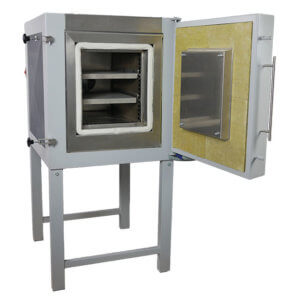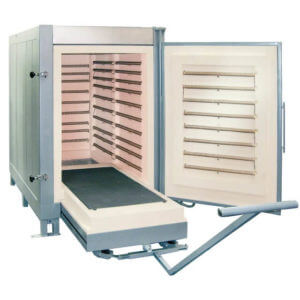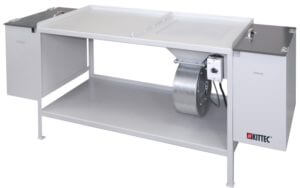Hardening
Hardening of ferrous materials (steel and cast iron) serves to increase their hardness, and can be combined, among other things, by thermal treatment (heating followed by rapid
In so-called transformation hardening, the most important hardening process, the workpiece is heated to such an extent that its microstructure changes from ferrite (α-iron with a body-centered cubic crystal structure) to austenite (γ-iron with a face-centered cubic crystal structure). Much more carbon can be dissolved in austenite than in ferrite.
If the workpiece is kept at the correct temperature (usually > 723°C) long enough, the carbon already present or additionally introduced into the austenite goes into solution. If the workpiece is now cooled sufficiently quickly and deeply, the carbon can no longer diffuse out of the crystal lattice of the austenite, and the crystal structure of the iron can therefore no longer transform back into the body-centered cubic form of the ferrite, but instead folds over into another body-centered cubic crystal lattice, the so-called martensite. Martensite has a much higher hardness than ferrite.
In a second step, known as tempering, the workpiece, which is very hard and brittle (“glass-hard”) after quenching, is softened again and adjusted to the desired service hardness by the targeted selection of the correct tempering temperature (higher temperatures result in lower hardness with higher toughness).
The process of hardening and subsequent tempering is called quenching and tempering.






